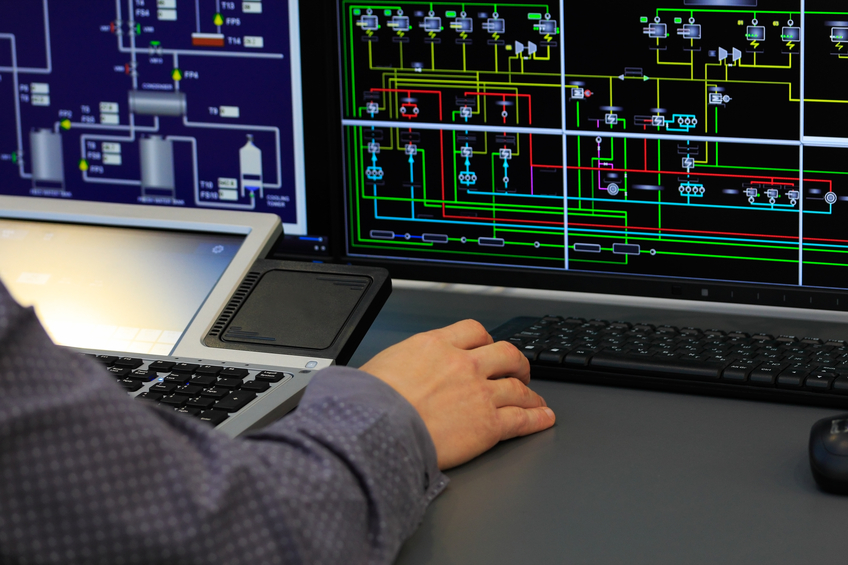Newfoundland and Labrador Electrical 42 PDH Discount Package 2
Courses in this Package
5G Technology Fundamentals (E02-027)
An Introduction to Cathodic Protection Systems Maintenance (E03-021)
An Introduction to Gas Insulated Electrical Substations (E03-043)
Basic Direct Current (DC) Theory (E03-001)
Basic Electrical Theory (E04-001)
Electrical Distribution Systems (E02-004)
SCADA System Fundamentals (E01-007)
General Principals of Engineering Ethics for Newfoundland and Labrador Professional Engineers (NL2-001)
HVAC Instrumentation and Controls (M06-019)
Introduction to Control and Instrumentation (E04-037)
Introduction to Transformers (E05-013)
Overview of Basic Instruments (E02-025)
Receivers: From Spark to 16-Qam (E03-023)
Electrical Test Instruments and Measuring Devices (E02-003)

This online engineering PDH course will explore the fundamentals of several technological advancements and improvements that enable the deployment of 5G.
5G has arrived! In this exciting launch into the next decade of cellular technology, 5G is revolutionizing the modern way of life. Whether you are a wireless industry expert or data consumer, 5G technology devices are everywhere and you may even own one as we speak. Today’s advancements in 5G leverages many improvements on bandwidth efficiency, power efficiency (battery life), network capacity, latency rates, reduction of multipath effects, and other technological advances that ultimately enable mobile users as well as the Internet of Things (IoT) to be ubiquitously connected to the internet. As the world becomes increasingly data hungry Cisco Systems estimates global data usage to be in the billions of gigabytes every month! Have you ever considered what makes this possible? Or have you pondered to yourself where all of the wireless bandwidth could possibly come from? Join us in exploring the technologies that make the deployment of 5G possible.
This 2 PDH online course is applicable to electrical, civil, and mechanical engineers, as well as project managers in construction, and other professionals who are interested to grasp a fundamental understanding of 5G technologies that can help us not only improve quality of life, but also usher us into the endless possibilities that this generation of 5G can bring.
This P.Eng. continuing education course is intended to provide you with the following specific knowledge and skills:
- Familiarizing with a brief overview of the evolution of wireless technology
- Understanding challenges to overcome in order to achieve 5G standards
- Understanding 5G performance benchmarks (“5G Triangle”)
- Learning examples of potential 5G use cases
- Learning how to achieve 5G performance by addressing 2 important questions:
- Where can we get more spectrum?
- How can we better utilize existing spectrum?
- Learning Millimeter wave technology for expanding spectrum capacity
- Network congestion in existing spectrums
- Propagation vulnerabilities
- Attenuation trade-offs
- Antenna size advantages
- Learning MIMO technology for increasing spectral efficiency
- Overcoming small-scale propagation effects (multipath fading)
- Antenna diversity for multiplying radio signals
- OFDM modulation scheme basics
- MIMO modes
Once you complete your course review, you need to take a multiple-choice quiz consisting of ten (10) questions to earn 2 PDH credits. The quiz will be based on the entire document.
Upon successful completion of the quiz, print your Certificate of Completion instantly. (Note: if you are paying by check or money order, you will be able to print it after we receive your payment.) For your convenience, we will also email it to you. Please note that you can log in to your account at any time to access and print your Certificate of Completion.

This online engineering PDH course will provide you with an introduction to the methods, equipment and practices for inspection and maintenance of cathodic protection systems. Both galvanic (sacrificial anode) and impressed current systems are discussed.
To comply with environmental regulations, public law, and industry standards, preventive maintenance is required for all installed cathodic protection systems.
This 3 PDH online course is intended for civil engineers, structural engineers, mechanical engineers, electrical engineers and other design and construction professionals seeking an introduction to the principles of inspection, testing and maintenance of cathodic protection systems.
This P.Eng. continuing education course is intended to provide you with the following specific knowledge and skills:
-
Learning about close-interval corrosion surveys
-
Learning how to take corrosion survey potential measurements
-
Understanding the importance of water tank calibrations
-
Learning about recommended over-the-anode intervals for impressed current anode bed surveys
-
Learning about impressed current system checks
-
Learning about resistance bond checks
-
Learning about anode bed inspection and testing for impressed current cathodic protection systems
In this professional engineering CEU course, you need to review the course document titled, "An Introduction to Cathodic Protection Systems Maintenance".
Upon successful completion of the quiz, print your Certificate of Completion instantly. (Note: if you are paying by check or money order, you will be able to print it after we receive your payment.) For your convenience, we will also email it to you. Please note that you can log in to your account at any time to access and print your Certificate of Completion.

This online engineering course provides a basic overview of Gas Insulated Substations (GIS) and GIS technology.
A GIS is a high voltage substation in which the major conducting structures are contained within a sealed environment with a dielectric gas known as sulfur hexafluoride gas (SF6) as the insulating medium. In comparison, a conventional (AIS) or Air-Insulated Substation, uses atmospheric air as the dielectric gas medium, as these types of substations are almost always located at outdoor locations.
This 3 PDH online course is intended for electrical engineers and all other technical personnel working within the electric utility industry, who are interested in gaining a better understating of GIS systems and GIS technology.
This P.Eng. continuing education course is intended to provide you with the following specific knowledge and skills:
- Familiarizing with the basic concept of a GIS System
- Learning about Hybrid GIS Substations
- Understanding the advantages and disadvantages of GIS Systems
- Learning about SF6 gas, leak detection, and gas monitoring systems
- Familiarization with international standards relating to GIS
- Understanding the basic economic considerations of GIS vs AIS
- Learning about contaminants and oxidation in the gas
- Familiarizing with enclosure modules for a GIS System
- Learning about conductors in a GIS System
- Familiarizing with the circuit breakers and transformers used in GIS Systems
- Learning about switching and arrester devices used in GIS Systems
- Learning about the connections in GIS Systems
- Familiarizing with the control system of a GIS
- Familiarizing with testing, installation, and operational procedures for a GIS
Upon successful completion of the quiz, print your Certificate of Completion instantly. (Note: if you are paying by check or money order, you will be able to print it after we receive your payment.) For your convenience, we will also email it to you. Please note that you can log in to your account at any time to access and print your Certificate of Completion.

This online engineering PDH course introduces the basic concepts of direct current (DC). It starts by describing the various types of DC sources. It explains the relevant DC circuit terminology. It demonstrates a series of basic DC circuit calculations by providing pertinent examples. It introduces conventional and electron flow and voltage polarity as well as defines Kirchhoff's Laws. Finally it discusses DC circuit analysis and faults.
This 3 PDH online course is applicable to electrical and computer engineers, design and construction personnel, technical staff and facility operators who are interested in gaining a better understanding of the theory of direct current.
This P.Eng. continuing education course is intended to provide you with the following specific knowledge and skills:
- Identifying DC sources
- Familiarizing with DC circuit terminology
- Performing DC circuit calculations
- Understanding voltage polarity and current direction
- Knowing Kirchhoff's laws
- Analyzing DC circuits and identifying circuit faults
In this professional engineering CEU course, you need to review Module 2, "Basic DC Theory" of the Department of Energy Publication DOE-HDBK-1011/2-92, "Electrical Science".
Upon successful completion of the quiz, print your Certificate of Completion instantly. (Note: if you are paying by check or money order, you will be able to print it after we receive your payment.) For your convenience, we will also email it to you. Please note that you can log in to your account at any time to access and print your Certificate of Completion.

This online engineering PDH course introduces basic electrical concepts. It starts by explaining the concept of the electrostatic force and the first law of electrostatics. It defines the basic electrical terminology and its corresponding units of measure. It continues to describe the methods of producing electricity. It also describes the principle of magnetism and magnetic circuits. Finally it provides a list of basic electrical symbols used to read and interpret electrical system diagrams and schematics.
This 4 PDH online course is applicable to electrical and computer engineers, design and construction personnel, technical staff and facility operators who are interested in gaining a better understanding of the theory of electricity.
This P.Eng. continuing education course is intended to provide you with the following specific knowledge and skills:
- Understanding atoms and their forces
- Distinguishing electrical components conductors, insulators and resistors
- Understanding voltage and current
- Learning the units of electrical measurements
- Identifying the methods of producing voltage
- Understanding magnetism and magnetic circuits
In this professional engineering CEU course, you need to review Module 1, "Basic Electrical Theory" of the Department of Energy Publication DOE-HDBK-1011/2-92, "Electrical Science".
Upon successful completion of the quiz, print your Certificate of Completion instantly. (Note: if you are paying by check or money order, you will be able to print it after we receive your payment.) For your convenience, we will also email it to you. Please note that you can log in to your account at any time to access and print your Certificate of Completion.

This online engineering PDH course describes basic electrical distribution systems including system components and protection devices. It also presents the characteristics of system design, such as circuit breakers, motor controllers, wiring schemes and grounding, to ensure personnel and equipment safety.
This 2 PDH online course is applicable to electrical and computer engineers, design and construction personnel, technical staff and facility operators who are interested in gaining a better understanding of electrical distribution systems.
This P.Eng. continuing education course is intended to provide you with the following specific knowledge and skills:
- Understanding of system components and protection devices
- Learning about circuit breakers and motor controllers
- Understanding wiring schemes and grounding
In this professional engineering CEU course, you need to review Module 15, "Electrical Distribution Systems" of the Department of Energy Publication DOE-HDBK-1011/2-92, "Electrical Science".
Upon successful completion of the quiz, print your Certificate of Completion instantly. (Note: if you are paying by check or money order, you will be able to print it after we receive your payment.) For your convenience, we will also email it to you. Please note that you can log in to your account at any time to access and print your Certificate of Completion.

This online engineering PDH course provides the basics of Supervisory Control and Data Acquisition (SCADA) Systems as well as an understanding of the basic terminology and components of a SCADA system. SCADA systems are found wherever processes are being run with large amounts of data to be monitored or remote equipment is being operated at unmanned facilities. Therefore, any engineer has the potential to interface with a SCADA system.
This 1 PDH online course is applicable to engineers interested gaining an understanding of the basic components and terminology of SCADA systems. No previous knowledge of SCADA systems or controls is needed for this course.
This P.Eng. continuing education course is intended to provide you with the following specific knowledge and skills:
- Knowing the basic definitions
- Learning about the basic architecture of SCADA systems and their core components
- Knowing the basic communication equipment and its use by SCADA systems
- Understanding of the two major communication protocols used with SCADA systems
In this professional engineering CEU course you will need to review the course document titled, "SCADA System Fundamentals".
Upon successful completion of the quiz, print your Certificate of Completion instantly. (Note: if you are paying by check or money order, you will be able to print it after we receive your payment.) For your convenience, we will also email it to you. Please note that you can log in to your account at any time to access and print your Certificate of Completion.

This online engineering PDH ethics course is (1) the study of moral issues and decisions confronting individuals and organizations involved in engineering and (2) the study of related questions about moral conduct, character, ideals and relationships of peoples and organizations involved in technological development (Martin and Schinzinger, Ethics in Engineering).
This course will address the principles of engineering ethics that every engineer is expected to live by when practicing their profession. This course also provides a general overview on PEGNL’s procedure of filing an allegation, its resolution by Registrar and its referral to Complaints Authorization Committee. It will also present unique ethical case studies randomly selected to demonstrate ethical challenges for professional engineers and alternatives to address these challenges.
This 2 PDH online course is applicable to Professional Engineers licensed in the Province of Newfoundland and Labrador and who are required to demonstrate continuing professional competency in ethical practice as a condition of their license renewal. For each renewal period, every licensee must complete at least two (2) professional development hours relative to the principals of professional responsibility, conduct and ethics.
This P.Eng. continuing education course is intended to provide you with the following specific knowledge and skills:
- Understanding the definition of engineering ethics
- Learning about the important principles of the Engineer’s Professional Responsibility
- Gaining a general overview on P.Eng.GNL’s procedure of filing an allegation, its resolution by Registrar and its referral to Complaints Authorization Committee (CAC)
- Understanding Complaints Authorization Committee (CAC) Process
- Familiarizing with the professional conduct procedure of a hearing by an adjudication tribunal
- Understanding professional ethical practices through presenting realistic case studies
Upon successful completion of the quiz, print your Certificate of Completion instantly. (Note: if you are paying by check or money order, you will be able to print it after we receive your payment.) For your convenience, we will also email it to you. Please note that you can log in to your account at any time to access and print your Certificate of Completion.

This online engineering PDH course covers the fundamentals of automatic controls in the HVAC system. Emphasis is placed on the control principles, terminology, basic components, control devices and direct digital control systems. Numerous illustrations and examples have been included to enhance the understanding of the course material.
The HVAC systems are designed for peak conditions. Because these conditions prevail only for small period in a year, the HVAC equipment must operate most of the time at lean capacity. The function of the control system is to adjust the equipment capacity to match the load. Automatic controls are necessary not only to achieve the design conditions in the conditioned space but are also required for efficient operation of the HVAC system. The main parameters to be controlled in air conditioning system are temperature, pressure, humidity, air quality and thermal energy distribution.
It is important to note that the primary factor influencing the effectiveness of HVAC system is the proper mechanical design itself. The HVAC system must be properly designed to satisfy the process or comfort requirements. Only when this criterion is satisfied can a suitable control system be applied.
The 6 PDH online course is applicable to mechanical, electrical, controls and HVAC engineers, architects, building designers, contractors, estimators, energy auditors and facility managers who are interested in gaining a better understanding of HVAC instrumentation and controls. This course is aimed at the personnel who have some limited background in the air conditioning field or who may be having difficulty relating controls to air-conditioning equipment.
This P.Eng. continuing education course is intended to provide you with the following specific knowledge and skills:
- Defining the basic blocks of control system
- Distinguishing between open loop and closed loop systems
- Understanding the different types of temperature, humidity, pressure and flow sensors
- Defining setpoint, control point, offset and throttling range
- Determining controller action for given the application
- Distinguishing between direct and reverse reset
- Distinguishing between the mixing and diverting valves
- Defining flow coefficient, valve authority, controllability, rangeability and turndown ratio;
- Describing the sizing of control valves
- Defining proportional control, PI control and PID control
- Describing direct digital control terminology, hardware and control network
- Citing the energy saving benefits of DDC systems
In this professional engineering CEU course, you need to review the document titled "HVAC Instrumentation and Controls".
Upon successful completion of the quiz, print your Certificate of Completion instantly. (Note: if you are paying by check or money order, you will be able to print it after we receive your payment.) For your convenience, we will also email it to you. Please note that you can log in to your account at any time to access and print your Certificate of Completion.

This engineering online PDH course will establish, through slides and discussions, the basic principles of control systems, including systems such as loops control, elements, types of controls and control circuit diagrams. Additionally, it will present diagrams of basic instruments to illustrate how the instrument functions.
The Introduction to Instrumentation and Controls presents the elements that make a control system and the most common instrumentation used in industry. It describes basics of control loops, configuration, including control loop and its elements. It also describes instrumentation for pressure, flow, level and temperature, explaining their physical principles, and common applications. Introduction to motor controls is included in the last section of the course. Basic motor control schematics for simple motor starters are explained. Finally, basic description of a of modern motor control center is presented.
The 4 PDH online course is intended for electrical, chemical, and mechanical engineers, as well as project managers in industry, who are interested either in learning more about control systems and instrumentation or wish to refresh basic control and instrumentation concepts.
This P.Eng. continuing education course is intended to provide you with the following specific knowledge and skills:
- Identifying system elements and components
- Understanding the basics of controls such as loop and open controls and their respective elements
- Learning about the methods and principles of instrumentations
- Familiarizing with the Basics of motor control elements
In this professional engineering CEU course, you need to review the course document titled, "Introduction of Control and Instrumentation" by Manuel Gooding.
Once you complete your course review, you need to take a multiple-choice quiz consisting of twenty five (25) questions to earn 4 PDH credits. The quiz will be based on the entire document.
Upon successful completion of the quiz, print your Certificate of Completion instantly. (Note: if you are paying by check or money order, you will be able to print it after we receive your payment.) For your convenience, we will also email it to you. Please note that you can log in to your account at any time to access and print your Certificate of Completion.

This online engineering PDH course describes the basic concept, function, types, and the different components of electrical transformers.
A transformer is an electrical equipment that transfers energy from one circuit to another by electromagnetic induction. They are often used to convert between high and low voltages (step-up or step down). Transformers and their components vary depending on the application and are available in several different configurations.
This 5 PDH online course is applicable to electrical and mechanical engineers, maintenance personnel and other technical staff who are interested in gaining a better understanding of transformers.
This P.Eng. continuing education course is intended to provide you with the following specific knowledge and skills:
- Understanding the function of transformers and their physical characteristics
- Familiarizing with the different components of transformers
- Learning how to identify a transformer as step-up or step-down and state the current ratio of a transformer when given the turns ratio
- Learning the mathematical relationship between the power in the primary and the power in the secondary of a transformer
- Understanding the basics of the different types of transformers
Upon successful completion of the quiz, print your Certificate of Completion instantly. (Note: if you are paying by check or money order, you will be able to print it after we receive your payment.) For your convenience, we will also email it to you. Please note that you can log in to your account at any time to access and print your Certificate of Completion.

This online engineering PDH course provides an overview of various types of indicating instruments used in engineering plants and other day-to-day applications.
Engineering measuring instruments are typically classified into the following groups: pressure gauges, temperature detectors, temperature measuring devices, electrical indicating instruments, liquid-level indicators, revolution counters and indicators, salinity indicators, and torque wrenches.
These instruments are used to determine how the engineering plant is operating. Machinery damage, personnel injury, and expensive and time-consuming repairs can be avoided by taking proper operator actions, which can only take place when the instruments (temperature indicators, pressure gauges, and so forth) are properly calibrated and properly interpreted by the operating personnel.
This 2 PDH online course is applicable to electrical and mechanical engineers as well as others interested in learning more about the basic instruments used in various engineering applications.
This P.Eng. continuing education course is intended to provide you with the following specific knowledge and skills:
- Familiarizing with the basics of engineering measuring instruments
- Understanding the use of sensitive measuring tools
- Learning how to read and interpret gauges, indicators, and thermometers
- Gaining a general overview of the purpose of engine test equipment
Upon successful completion of the quiz, print your Certificate of Completion instantly. (Note: if you are paying by check or money order, you will be able to print it after we receive your payment.) For your convenience, we will also email it to you. Please note that you can log in to your account at any time to access and print your Certificate of Completion.

This online engineering PDH course covers the development of radio receivers from the late 1800s to the present, simultaneously in separate dimensions: Time and Frequency. As communications technology has progressed since the late 1800s, so has the upper frequency limit. The advancement of technology and upper frequency have happened in parallel so organizing this course in chronological order dovetails well with increasing frequencies.While circuitry is not addressed except in a very few cases where it cannot be avoided, there is extensive information to cover the evolution of radio receivers.
In the last few decades, incredible advances in computer technology have led to the ability to digitize received signals for computer processing. This brings tremendous advantages, as adding software capabilities does not require hardware changes. For example, a receiver can be configured with a wide selection of filter bandwidths to allow matching the filter to the incoming signal. Such a system would be unaffordable in hardware. As analog-to-digital conversion becomes possible at ever higher frequencies, the conversion point has been migrating closer and closer to the antenna.
We are now in the era of the software-defined-radio. Regardless, the physics of the universe still applies, and the techniques developed over the last century are still relevant, even if incorporated into a computer program. George Santayana warned that those who ignore history are doomed to repeat it. While he did not have the evolution of communications gear in mind, his rule applies here too.
This 3 PDH online course is intended for electrical or communications engineers, design professionals, and others interested in gaining an understanding of radio receivers.
This P.Eng. continuing education course is intended to provide you with the following specific knowledge and skills:
-
Understanding from early experiments in what came to be known as wireless
-
Learning about wireless spark transmitters and receivers
-
Learning about CW communication
-
Learning about AM broadcast reception and its evolution to today
-
Learning about HF band shortwave radio and the move to single sideband
-
Learning about FM broadcast reception
-
Learning about VHF radios and repeaters
-
Learning about data radios and modulation techniques
Upon successful completion of the quiz, print your Certificate of Completion instantly. (Note: if you are paying by check or money order, you will be able to print it after we receive your payment.) For your convenience, we will also email it to you. Please note that you can log in to your account at any time to access and print your Certificate of Completion.

This online engineering PDH course describes electrical measuring devices such as voltmeters, ammeters, ohmmeters and wattmeters. It also describes test equipment such as multimeters and meggers. It discusses the electrical parameters measured and the principles of operation of common instruments.
This 2 PDH online course is applicable to electrical and computer engineers, design and construction personnel, technical staff and facility operators who are interested in gaining a better understanding of electrical test instruments and measuring devices.
This P.Eng. continuing education course is intended to provide you with the following specific knowledge and skills:
- Understanding meter movements
- Learning about the various electrical measuring devices (voltmeters, ammeters, ohmmeters and wattmeters)
- Learning about the various electrical test equipment (multimeters and meggers)
In this professional engineering CEU course, you need to review Module 14, "Test Instruments and Measuring Devices" of the Department of Energy Publication DOE-HDBK-1011/2-92, "Electrical Science".
Upon successful completion of the quiz, print your Certificate of Completion instantly. (Note: if you are paying by check or money order, you will be able to print it after we receive your payment.) For your convenience, we will also email it to you. Please note that you can log in to your account at any time to access and print your Certificate of Completion.